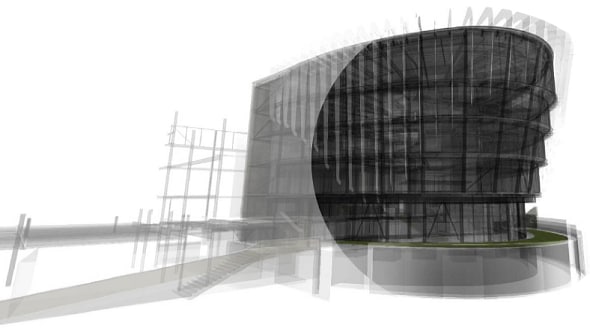Business benefits
As AHR’s BIM champion, Stott’s aim is to ensure best practice in the use of BIM software and process delivery to provide the best possible outcomes for clients. He expands, “BIM is integral to projects across our services and offers us the tools with which to build computer generated models of our designs – using and containing digital objects that carry information about the design, construction and operation of an asset.”
He continues, “In this virtual world we can explore our designs – to appreciate a space or a function and to collaborate on the coordination of the design with the stakeholder team. This adds value for clients, giving them a one-stop-shop for the multiple aspects of their requirements.”
The challenge for many architects and contractors in the construction industry, has been how best to become BIM Level 2-compliant. A particular problem has been so-called ‘BIM wash’, whereby companies have made false claims about their BIM capability.
One way to help counter this is through independent third-party certification, which reviews process compliance with PAS 1192-2 in all areas of BIM implementation. This was the route taken by AHR, which, in March 2016, became the first architecture-led practice to receive BIM verification certification from BSI.
“As the government mandate approached, we started to receive a lot of questions,” says Stott. “Clients and contacts were asking: ‘Do we comply with the Government condition of contract?’, ‘Are we working at BIM Level 2?’. I was always able to say ‘yes’, but the BSI certification was hugely valuable in supporting this claim. Our clients and collaborators can be confident that our working methods have been rigorously assessed and independently verified.”
According to Stott, there have also been internal benefits from the audit and certification process. “It has provided a lot more clarity,” he says. “There is a lot of industrywide confusion about what is and isn’t involved in BIM, but by revisiting and restructuring how we go about meeting our BIM Level 2 requirements, we were able to demystify the subject. We were able to make it accessible and digestible for all staff members, not just BIM specialists.”
Looking to the future
Looking ahead, AHR is interested in the new BSI Kitemark™ scheme, which can be integrated with its existing certification. While BIM compliance can be proved through verification certification to PAS 1192-2, the BSI Kitemark would provide assurance of successful delivery of specific projects and outcomes, providing further reassurance to the practice’s clients and prospects.
In the meantime, Stott is convinced that, ultimately, verified BIM Level 2 capability is helping AHR to drive business, “because it has given us the ability to differentiate ourselves from a lot of other architectural practices.”
He concludes, “We continue to implement and deliver excellence in BIM Level 2 and our advancement to Level 3 is well underway.”

